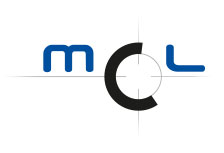Project information
- Project name
- 101007319 AI-TWILIGHT
- Period
- Jun 2021 - May 2024
- Call
- ECSEL-JU 2020
- Total Partners
- 24
- Member Partners
- 5
- Website
- No website
- EU Funding
- 5,19 M Euro
In all lighting sectors, warranty and customisation are becoming key product differentiators. In addition to that, the integration of more electronics and sensors in lighting systems will change what we call lighting today. While the concepts of digitalisation and Industry 4.0 are progressing fast into the manufacturing world, in the lighting industry, the front-end product design is still using traditional simulation techniques. An innovative approach is to couple digital twins with Artificial Intelligence to offer unlimited possibilities to the “first build and then tweak” approach. Th...
In all lighting sectors, warranty and customisation are becoming key product differentiators. In addition to that, the integration of more electronics and sensors in lighting systems will change what we call lighting today. While the concepts of digitalisation and Industry 4.0 are progressing fast into the manufacturing world, in the lighting industry, the front-end product design is still using traditional simulation techniques. An innovative approach is to couple digital twins with Artificial Intelligence to offer unlimited possibilities to the “first build and then tweak” approach. The main goal of AI-TWILIGHT is to merge the virtual and physical worlds to pave the way for innovations in fields where the European lighting industry is likely to be competitive. Self-leaning digital twins of lighting systems (LED source, driver of a lighting application) will be created and used as input for predicting performance and lifetime of product and infrastructure design and management in an autonomous world. Tests will be carried out in selected application domains e.g. automotive, horticulture, general and street lighting. The key technical and exploitation objectives of the AI-TWILIGHT consortium are: • To create and digital twins of LED light-sources and electronics (driver) • To create self-learning models using AI and analytics techniques • To facilitate the implementation of the digital twins in digitalized design flow (for SSL product design) and facilitate their applications upstream, up to digital twins of lighting systems of large infrastructures (e.g. for building design). • To implement the AI-TWILIGHT methods, models and tools within consortium partners to harvest its benefits When translated to business goals, objectives will result in the introduction of more customised and connected products by 20% while reducing the time to market by 30%, and reducing by 25% the total cost of ownership of a “AI-TWILIGHT powered system.
Project leader
- Name
- Genevieve Martin
- Organisation
- Signify Netherlands B.V.
- Country
- Netherlands













